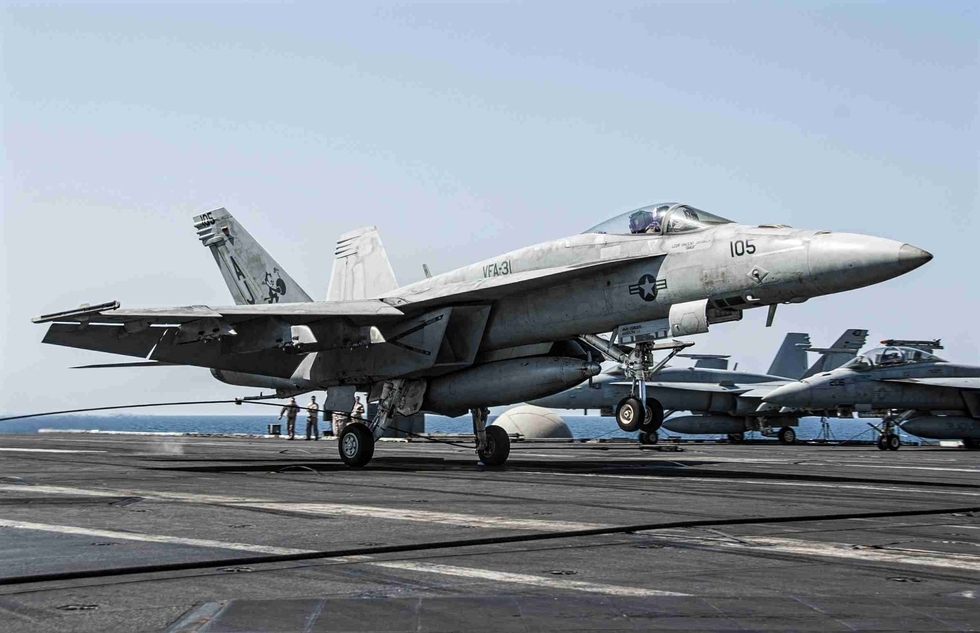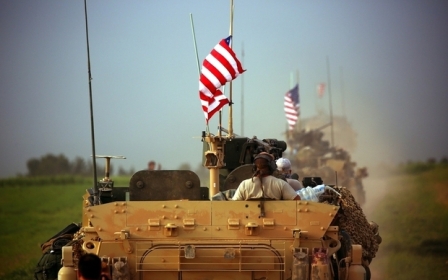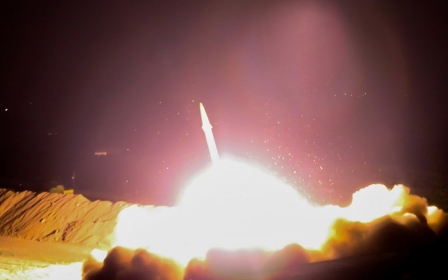ANALYSIS: US plays a dangerous game in southern Syria

A Syrian Air Force Su-22 allegedly bombed a US-backed SDF position near the city of Tabqa on 18 June and was promptly shot down by a US F/A-18 fighter jet.
Following the US military's first air-to-air kill in almost two decades, Centcom released a firm statement , saying that the "hostile intent" of pro-government forces toward the coalition and its partner forces in Syria would "not be tolerated".
A new US red line in Syria had been drawn.
Washington places its bet
During the past few years, the majority of southern and eastern Syria has been controlled by the Islamic State group (IS). Now, after years of bombardment by the international coalition and military pressure from all sides, their caliphate is collapsing.
IS militants have conducted lengthy fighting retreats from Aleppo and Hama Governorates, heading back to their strongholds further east. At the same time Mosul, their largest city, has been all but retaken by the Iraqi Army, and Raqqa, their de-facto capital, has come under siege from the Syrian Democratic Forces (SDF).
But as it retreats, IS leaves a power vacuum which a multitude of players are now rushing to fill. Each group is racing to advance as fast as possible, aware that even uninhabitable desert which is controlled by their fighters could be useful as a bargaining chip in any post-IS settlement of Syria.
In this race, the US clearly has hedged its bets on who it wants to win. In the north of Syria, and the area east of the Euphrates River, the SDF has enjoyed heavy support from air strikes and, more recently, heavy weapons and ground troops.
The days of Islamic State are clearly numbered
In the south, the picture is more complex. The US first supported the New Syrian Army in late 2015, which had links to the Free Syrian Army (FSA). Following the failure of an audacious attack on IS-held Abu Kamal in June 2016, the group rebranded itself as the Revolutionary Commando Army (RCA), a transition completed by December 2016.
Having regrouped, the RCA enjoyed increased American support, with Washington eventually revealing publicly that it was operating a special forces base to train and equip the group near the al-Tanf border crossing with Iraq.
Mozahem al-Saloum, the former spokesperson for NSA, who retains close links to its successor group, said: "They are providing equipment, money, weapons, armour, and training of course. The British forces, they are sharing in the training. Also, you have the ground support - they are fighting in the desert with the RCA guys."
Pro-Assad groups continue to advance
But Iran and Russia, the other side in this race, have their own ideas on who they want to win. Tehran and Moscow hope that the Bashar al-Assad regime's hollowed-out military, and its allied Shia militia groups, will themselves be able to retake this part of the country and further secure the sovereignty of a Syria united under their forces.
Now that IS no longer stands as a buffer between these two sides, the situation is rapidly escalating. The first such incident happened on 18 May, when the US bombed a convoy of "pro-Syrian regime fighters" who were advancing into a so-called "de-confliction zone" separating the two groups near al-Tanf. The same happened several weeks later on 6 June, when the US again struck a pro-government convoy in a similar location, with the same justification.
Haid Haid, an expert on Syria at Chatham House, said: "What [the US forces] are trying to do is draw another red line that protects their areas of influence inside Syria and [...] defend those areas and say that those areas should not be approached."
What [the US forces] are trying to do is draw another red line that protects their areas of influence inside Syria and [...] defend those areas and say that those areas should not be approached
- Haid Haid, Chatham House
Yet international powers weren't the only ones calling the shots. Instead of retreating, the pro-Assad groups, mainly made up of Shia militias loyal to Iran, continued to advance, eventually reaching the border with Iraq and linking up with similar militia groups on the other side.
Phillip Smyth, an expert on Shia militia groups in the region, believes that this advance was ordered by Iran. "I think their orders came from Tehran," he said. "The groups involved in penetrating the deconfliction zone have predominantly been IRGC [Iranian Revolutionary Guard Corps] run and organised."
Such an assessment is also backed up by al-Saloum, who says that these groups can't be brought into line by Russian or US influence.
"There is an agreement between the US and the Russians about the safe zone, but what the regime and the Iranians did - they are coming from outside this zone and are playing a dangerous game. The Iranians and Assad, they only understand the language of force."
The tension around al-Tanf
While US-backing of the SDF has been ongoing now for several years, the current tensions around al-Tanf are relatively new. It means that Washington is actively establishing new facts on the ground, facts which Tehran and Damascus are not happy about.
Iran, of course, has its own motivations. As US-Iranian relations once again deteriorate, so further provocations cannot be discounted
Haid said: “The difference now is that [the US] created a new area around al-Tanf and this is the area in which the tension is mounting. They already had their own sphere of influence within Syria, but what they did is they extended it."
This all carries the very real risk of escalation. If Damascus and its Iranian-controlled proxy groups continue to test the US's resolve, then it would leave the Trump administration with a difficult choice: either defend their interests with yet greater force and risk becoming more deeply entangled in Syria's six-year-long war, or pull out from this area of Syria completely so as to avoid a messy conflict over what amounts to a barren wasteland.
Iran, of course, has its own motivations. As US-Iranian relations once again deteriorate, so further provocations cannot be discounted. Indeed, the US may have to make this uncomfortable choice sooner, rather than later.
Smyth said: "Iran may be testing the waters for greater confrontation in Iraq, Syria, Yemen, and elsewhere. The battle after ISIS [Islamic State] should be the focus for those watching."
New MEE newsletter: Jerusalem Dispatch
Sign up to get the latest insights and analysis on Israel-Palestine, alongside Turkey Unpacked and other MEE newsletters
Middle East Eye delivers independent and unrivalled coverage and analysis of the Middle East, North Africa and beyond. To learn more about republishing this content and the associated fees, please fill out this form. More about MEE can be found here.




